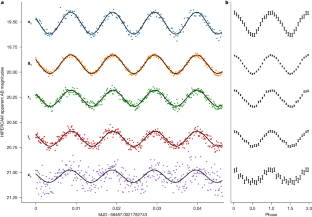2023-07-19 カーネギーメロン大学
◆ロボットは3つのモードで探査し、自律的に移動することができ、地図を作成します。システムにより、従来より効率的で、計算の実行時間を半分に短縮することができます。これらのシステムは、低光量や通信が不安定な洞窟やトンネル、廃墟など、厳しい条件でも動作します。
◆このロボティクスシステムは、様々なアプリケーションに適用可能で、配達や捜索救助などに活用できます。また、チームはこのシステムをDARPAのSubterranean Challengeに参加したTeam Explorerに使用し、4位に入賞しました。
<関連情報>
- https://www.cs.cmu.edu/news/2023/enabling-autonomous-exploration
- https://www.science.org/doi/10.1126/scirobotics.adf0970
表現粒度により、大規模で複雑な世界での時間効率の高い自律的探索が可能に Representation granularity enables time-efficient autonomous exploration in large, complex worlds
C. Cao,H. Zhu,Z. Ren,H. Choset, and J. Zhang
Science Robotics Published:19 Jul 2023
DOI:https://doi.org/10.1126/scirobotics.adf0970

Abstract
We propose a dual-resolution scheme to achieve time-efficient autonomous exploration with one or many robots. The scheme maintains a high-resolution local map of the robot’s immediate vicinity and a low-resolution global map of the remaining areas of the environment. We believe that the strength of our approach lies in this low- and high-resolution representation of the environment: The high-resolution local map ensures that the robots observe the entire region in detail, and because the local map is bounded, so is the computation burden to process it. The low-resolution global map directs the robot to explore the broad space and only requires lightweight computation and low bandwidth to communicate among the robots. This paper shows the strength of this approach for both single-robot and multirobot exploration. For multirobot exploration, we also introduce a “pursuit” strategy for sharing information among robots with limited communication. This strategy directs the robots to opportunistically approach each other. We found that the scheme could produce exploration paths with a bounded difference in length compared with the theoretical shortest paths. Empirically, for single-robot exploration, our method produced 80% higher time efficiency with 50% lower computational runtimes than state-of-the-art methods in more than 300 simulation and real-world experiments. For multirobot exploration, our pursuit strategy demonstrated higher exploration time efficiency than conventional strategies in more than 3400 simulation runs with up to 20 robots. Last, we discuss how our method was deployed in the DARPA Subterranean Challenge and demonstrated the fastest and most complete exploration among all teams.



